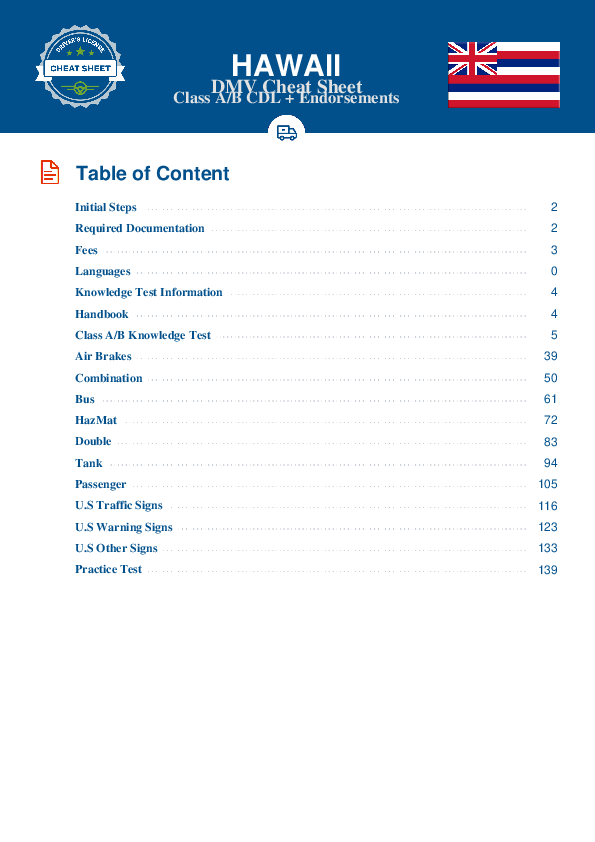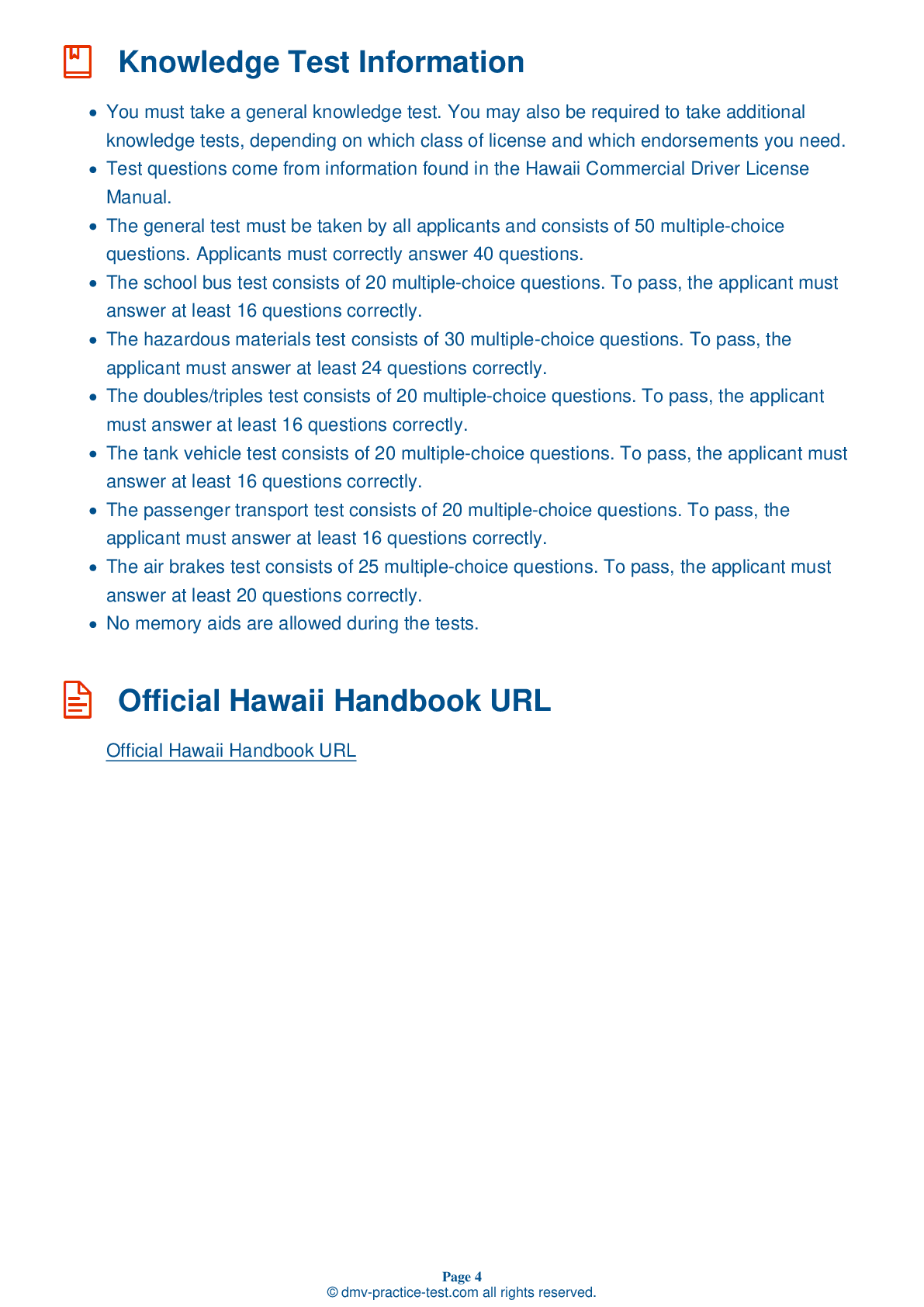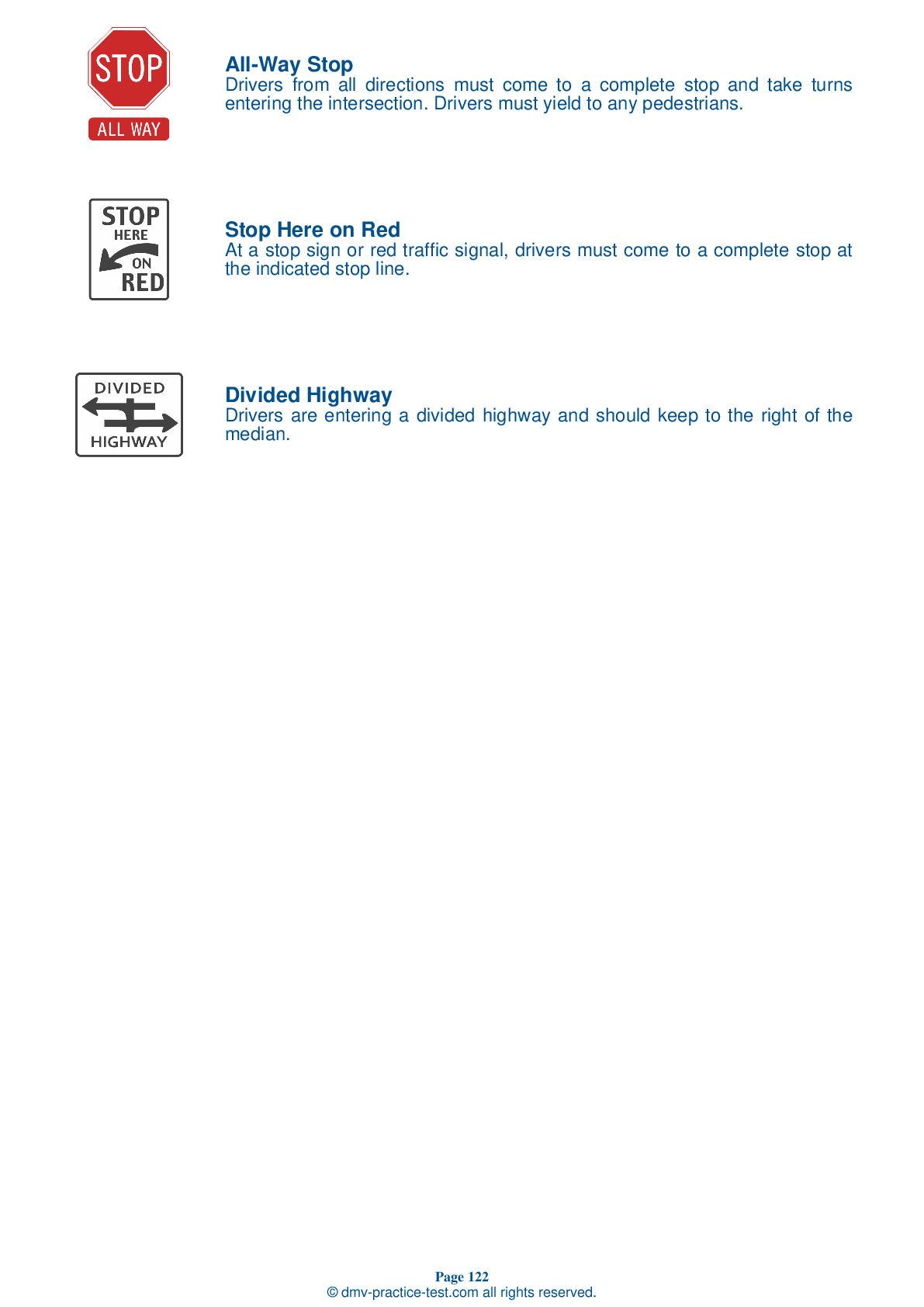Air Brakes Endorsement Test | Hawaii 2025 #2 Page 2 of 4
Train for FREE online with our Hawaii CDL air brake test. The official exam test consists of several obligatory parts, with all of them checking your knowledge of different blocks of road rules. If you need to obtain a HI Class A/Class B driver license in 2025, practice as much as possible. Free sample tests published on our website will help you check and improve your knowledge and boost your grades. Please bear in mind that the requirements for CDL may vary from state to state.
7 . When leaving your vehicle unattended:
Always apply the parking brake when leaving your vehicle unattended.
8 . Air pressure should build up in a single air system within:
In single air systems, air pressure should build from approximately 50 to 90 psi within three minutes.
9 . What is often found in compressed air?
Compressed air in an air brake system usually contains a certain amount of water and compressor oil. The water and oil can damage the brakes if left to accumulate in the system. Tanks must be drained regularly to remove this build-up.
10 . Why do large vehicles use air brakes?
If used and maintained properly, air brakes are a safe and effective way to stop large, heavy vehicles.
11 . What do the two systems of a dual air brake system share?
Both systems in a dual air brake systems share a single air compressor. If the air compressor is damaged, neither system will be able to operate properly.
12 . If the safety relief valve in the air brake system releases air:
An air brake system has a safety relief valve, which releases air from the tanks if the pressure gets too high. If the valve must operate, something in the system is wrong and should be addressed by a mechanic.
See the exact questions that will be on the 2025 Hawaii DMV exam.
99.2% of people who use the cheat sheet pass the FIRST TIME
Lillian MCcranie explains how our CDL study guide was helpful in passing the exam and recommends it to everyone.
Cameron tells us how he purchased the CDL exam, and found it to be a useful tool which helped him pass the exam and find a job.



